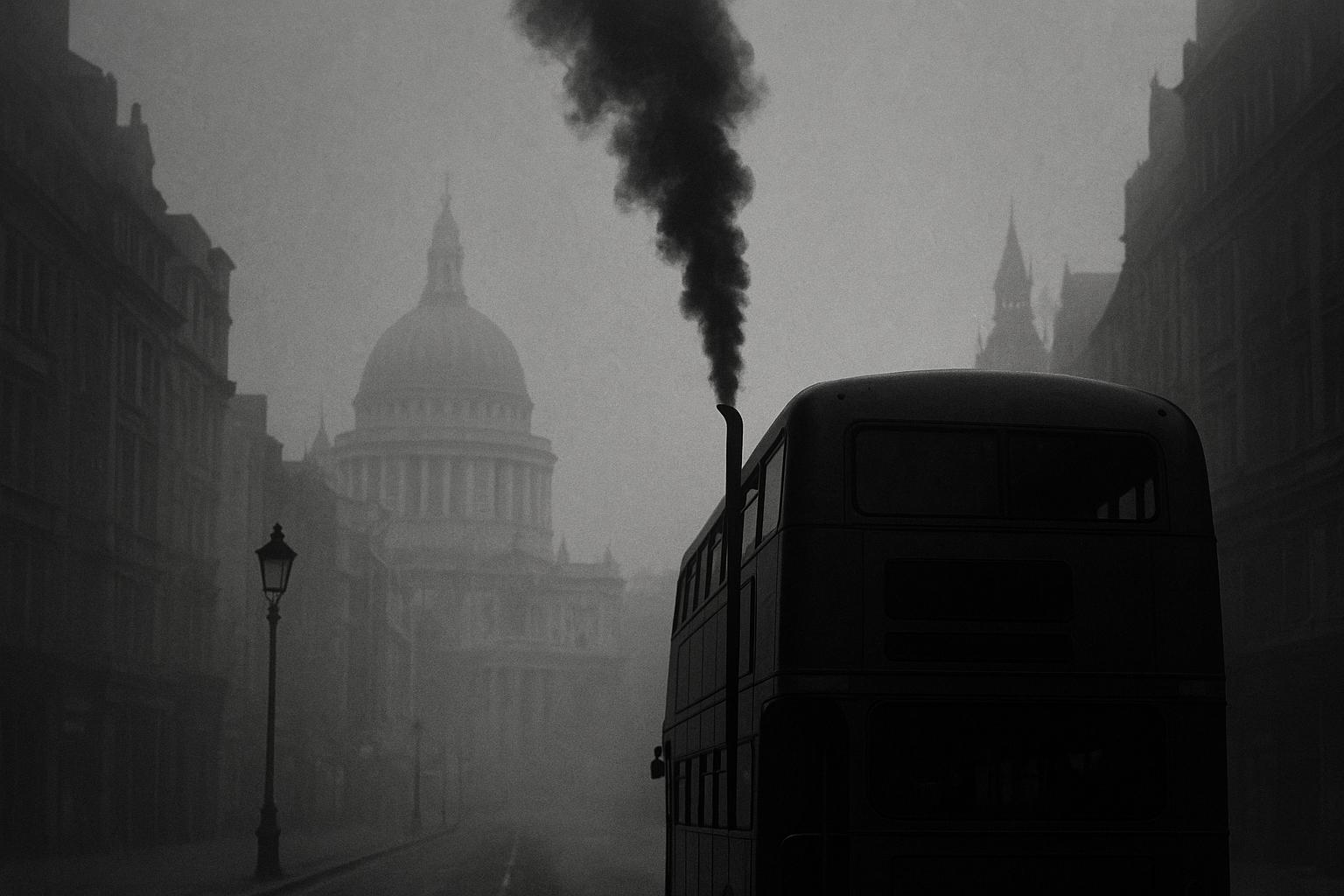London’s long battle with air pollution is steeped in history, dating back to the industrial era when coal-burning powered both industry and homes, shrouding the city in toxic smog. The infamous Great Smog of 1952, a dense cloud of industrial pollutants trapped by cold weather conditions, suffocated the capital for five days, leading to thousands of premature deaths and grievously impacting public health. Although estimates of the death toll vary, with figures ranging from around 4,000 to as many as 12,000 lives lost, the smog crystallised the urgent need for environmental reform and spurred the introduction of the UK government’s Clean Air Act of 1956. This legislation marked a turning point, setting restrictions on emissions and ushering in a slow, yet steady, improvement in urban air quality.
Despite these advances, London’s air pollution persists as a serious health risk. Current estimates from the London Air Quality Network suggest that up to 9,400 Londoners die prematurely each year due to poor air quality, while Transport for London (TfL) approximates the figure closer to 4,000. The continued presence of harmful emissions, particularly from the transport sector, underscores the complexity of the problem. As private vehicle emissions remain a chief contributor, the UK government has attempted to spearhead a transition to electric vehicles through financial incentives, infrastructure development, and stringent manufacturing regulations like the Zero Emission Vehicle Mandate. However, such approaches are more challenging to implement in public transport, where fleet replacement and infrastructure costs are far greater.
London’s public transport system, particularly its extensive bus network, has played a central role in the city’s decarbonisation efforts. Since TfL assumed control of the capital’s transport operations in 2000, it has overseen the transition from a 0% low-emission bus fleet to one where all 9,000 vehicles meet or exceed Euro VI emission standards, with a goal of 20% zero-emission buses by 2025. The fleet today comprises nearly 2,000 battery-electric buses, around 3,800 hybrids, and 20 hydrogen fuel cell buses, making it the largest zero-emission bus fleet in Western Europe. Operators contracted by TfL are required to align their services with these decarbonisation targets.
One of the newest and most ambitious entrants to this transition is First Bus London, which in 2025 took over operations from RATP Dev Transit London. The company has made electrification a cornerstone of its strategy, currently running 21 electric routes with plans to electrify all 83 routes and operate a fully electric fleet by 2034. The transition involves not only replacing vehicles but upgrading infrastructure across six electrified garages and retraining engineers to support new technologies. Managing the pace of this shift remains a challenge, with deployment timelines sometimes delayed by unforeseen complications in infrastructure readiness and power supply.
Central to TfL’s approach is a collaborative framework that facilitates knowledge-sharing among operators to pre-empt regulatory changes and streamline fleet upgrades. Historic initiatives such as the Low Emission Bus Zone programme targeted pollution hotspots and contributed to a significant reduction in nitrogen dioxide levels—by as much as 87% on some routes—showing the tangible benefits of coordinated intervention. Yet, the dense urban environment and limited availability of depot space pose practical challenges, particularly in terms of installing and maintaining the necessary charging infrastructure for electric buses.
Power supply emerges as a key operational hurdle for the bus electrification programme. TfL is actively engaging with Distribution Network Operators and industry partners to address the constraints of the city’s central power grid and ensure energy reliability for bus garages. Energy costs, after vehicle procurement, constitute a substantial portion of operational expenditure, highlighting the economic complexities entangled with environmental goals.
Looking ahead, London continues to explore diverse technologies to meet its zero-emission ambitions. Besides electric buses, TfL is trialling hydrogen fuel cell double-deck buses to evaluate their potential role within the fleet. This experimentation aims to broaden industry knowledge and improve adoption rates of alternative powertrains, thereby providing greater flexibility and resilience in London's journey towards cleaner air. The ongoing evolution of vehicle technologies, coupled with regulatory frameworks like the Ultra Low Emission Zone and Low Emission Zone, positions London as a global leader in urban transport decarbonisation, yet the path remains intricate and heavily dependent on innovative solutions and strategic collaboration.
As London pushes forward, it must balance historical challenges with forward-thinking initiatives, ensuring that the lessons of its smoky past drive a future of cleaner, healthier urban living—turning the tide from suffocating smog to clear skies.
📌 Reference Map:
- Paragraph 1 – [1] CiTTi Magazine, [2] Britannica, [4] London Museum, [6] History.com
- Paragraph 2 – [1] CiTTi Magazine, [3] London.gov.uk
- Paragraph 3 – [1] CiTTi Magazine
- Paragraph 4 – [1] CiTTi Magazine, [5] Wikipedia
- Paragraph 5 – [1] CiTTi Magazine
- Paragraph 6 – [1] CiTTi Magazine
- Paragraph 7 – [1] CiTTi Magazine
- Paragraph 8 – [1] CiTTi Magazine
Source: Noah Wire Services
